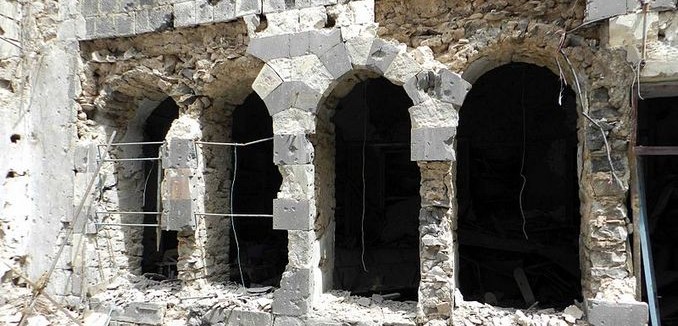The air strikes on a weapons convoy in the Lebanon-Syria border area and on a suspected weapons facility northwest of Damascus underscore the complexity of the new security situation Israel will confront in 2013. It seems that in the Middle East, despite the euphoria of the “Arab Spring,” it’s more and more difficult to find credible scenarios for restoring stability and quiet.
The changing political and social circumstances of the Arab world had put into question literally the existence of the Arab nation-states as they’ve existed through the Cold War and post-Cold War eras. The possibility that several of Israel’s neighbors will dissolve – or be transformed beyond recognition – has become likelier than ever.
The war in Syria, which next month reaches its two-year point, is the most pressing example. But it is one of many.
In Iraq, a Sunni “Intifada” against the Shiite-led government has been raging for more than five weeks. Last week dozens of people gathered in Fallujah to rally against the killing of protesters the week before, and to accuse the central government of neglecting Iraq’s Sunni population. It’s difficult to say how long Iraq’s national structure will retain its recognizable shape, given the clashing ambitions of the country’s Sunnis, Shiites, and Kurds.
A similar question hovers over Lebanon, particularly over the country’s “day after” scenario in the aftermath of Syrian ruler Bashar al-Assad’s overthrow. Should the Damascus regime fall the current political framework of the Land of the Cedars will undergo significant change. Lebanon’s dissolution into sectarian territories no longer seems impossible.
And of course back to Syria. Assad’s government has not shown any indications it is willing to relinquish power, and has managed to survive until now. But the Damascus government does not rule all of the territory inside Syria’s internationally-recognized borders. In fact many estimates indicate that Assad’s army controls just 25 to 30 percent of Syrian territory – no more. Elsewhere in the country, no recognized central authority exists. Radical groups identified with Al-Qeada are stepping into that vacuum, exacerbating the chaos.
As for Syria’s own “day after,” the prospects appear grim. The conduct of Syria’s “official” opposition offers a glimpse. The National Coalition for Syrian Revolutionary and Opposition Forces – the central body comprising the various opposition groups – met late last year in Marrakech. A participant, Kamal al-Labwani, scribbled a few of his impressions on an Internet forum. He described how half the participants had left the conference room just because he had suggested that Riyad Hijab – a former Syrian prime minister – should be considered for the prime ministership the coalition had been tasked with appointing. Labwani was pessimistic regarding the prospects that the coalition, created with the enthusiastic support of several Western and Arab governments, would do anything more than form committees and agree on further meetings.
Even worse, Assad’s departure does not guarantee that the fighting will stop. The opposite may be the case, with Syria fragmentation followed by an all-out war: sectarian, religious, and political. Israel would have to expend significant resources to protect its border – and its citizens – from being swept up in the fighting.
Meanwhile Syrian opposition forces continue to advance, slowly but surely, on Damascus. In recent days they have even approached its international airport. Three powerful blasts were heard one recent night not far from the presidential palace, and the next day dozens of people were again killed.
It’s no wonder that some analysts are pivoting from asking which Arab country will crumble in 2013, to which will crumble first.
[Photo: Bo yaser / Wiki Commons]




